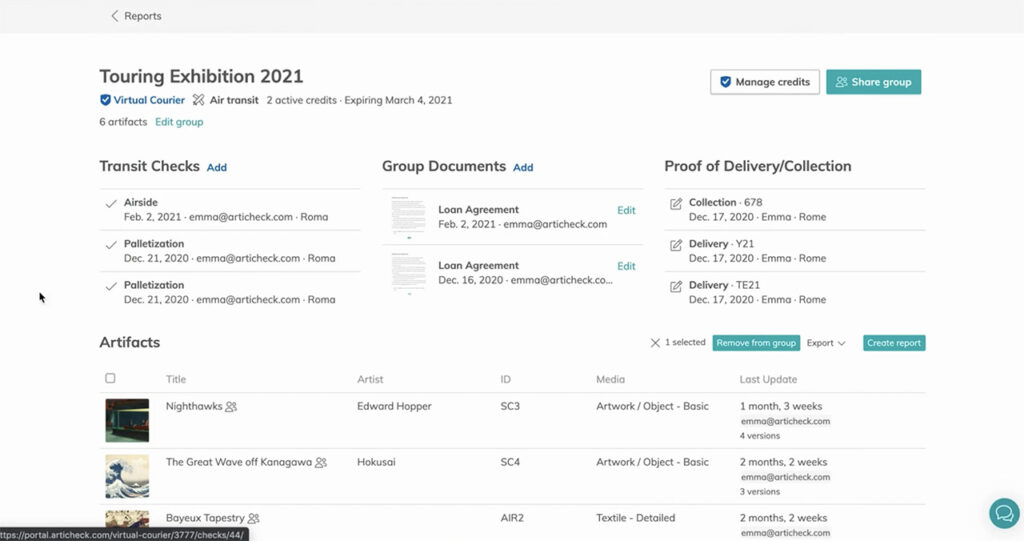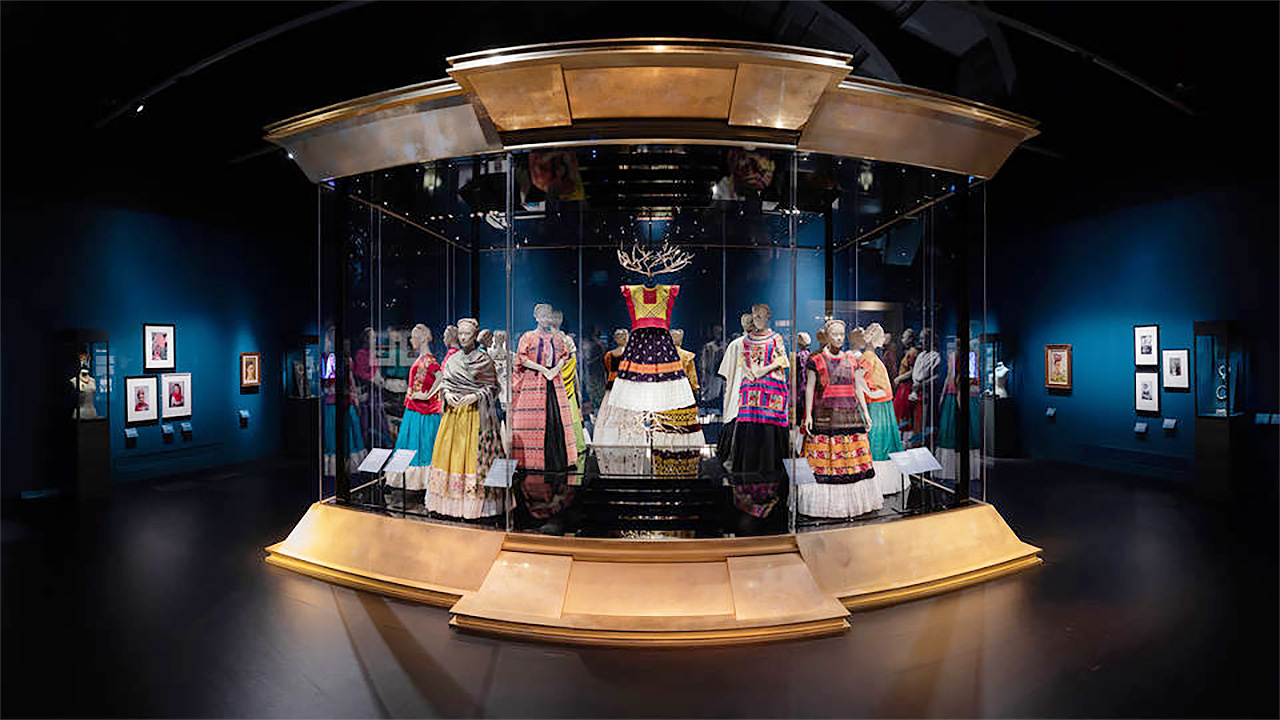In 2019, a Frida Kahlo show charmed visitors from London to Brooklyn with a previously unexhibited selection of the Mexican artist’s clothing and personal artifacts. Its carbon footprint, however, was anything but endearing. According to 24 ORE Cultura, an Italian cultural organizer, the show was responsible for 110 tonnes of CO2 emissions, 75 percent of which, it concluded, came from couriers.
Art couriership, the practice of using couriers to chaperone objects from institution to institution, has begun to receive scrutiny in recent years from an art world that long saw it as an essential link in a globalized system, and not simply for environmental reasons. Both costly ($900,000 in the Frida Kahlo exhibitions) and inefficient, pandemic-era travel disruptions have brought forth technological innovations from software systems monitoring and logging in-transit objects (virtual couriers) to installations conducted over video call. The future is most certainly courier-lite.
What are the drawbacks of using technology to monitor artwork travel? Will it lead to the Uberization of couriering? How serious are the environmental concerns? These were among the questions addressed in a webinar from Vastari, a digital networker and service provider for cultural institutions, with answers offered by experts in art handling, both traditional and cutting-edge.
What are the advantages of virtual couriers?
First off, cost. Between 60 to 90 percent of artworks that travel are 2D works that hang on a wall with two hooks. In truth, this requires little expertise on the part of couriers, though it’s difficult to imagine priceless masterpieces traveling without a human agent. Virtual courier services are secure, closed systems that leave a legally verified audit trail. On the sustainability side, virtual couriers are estimated to have a carbon footprint 1,000 times lower than traditional couriers.
“We’ve collaborated with the art world and shippers to have new solutions for art movement. The first was Virtual Courier: the purpose is to reduce risk, before, during, after [art movement]. We don’t want to take expertise out of the picture, but if a courier doesn’t have to travel, can something else be there so there isn’t a hole?” — Mackenzie Garrity, Chief Commercial Officer, Articheck
The Uberization of couriership is underway — is that a bad thing?

The dashboard of Virtual Courier by Articheck allows users to record and track condition of artifacts before, during, and after art movement. Image: Articheck
Changes catalyzed by the pandemic will endure on the aforementioned grounds of efficiency, cost, and sustainability and will reduce the number courier trips by around 50 percent in the coming years. For cases in which relying entirely on a virtual tracking system are not suitable, bookend couriers are a widely adopted solution, which brings advantages of specialization and localization.
“With bookend couriers you can hire a specialist in media, paper, photography, whatever you need. You can hire a registrar to do airport supervision, an object specific conservator, who can provide a more detailed report. You can hire a specialized art handler to do an installation; it provides more advantages — the local person knows the airport, the language, the protocols.” — John Thomas Robinette, Art & Artifacts Collections Management
What is lost through using a virtual courier?
“At my institution, we have made many connections in terms of research, information on materials, methods of conservation, and frame conservation. I think to lose that network of people and connections would be detrimental to institutions. I’m not sure you can have the same over video; networking is a key part of courier trips.” — Clare Mitchell, Director, Mitchell Heritage Limited
How can new couriership solutions help reimagine vast museum collections and touring exhibitions?
Ninety percent of museum collections remain interminably in storage. This creates a vicious cycle whereby the less works are displayed, the less they are valued and, in time, deemed worthy of restoration. One barrier to museums sharing storage works is the cost of long-haul shipping. Why not rethink how works, and by extension exhibitions, travel? The current centralized model — works travel from lender to lendee and back to lender — might be replaced with a loop system sending works onto additional lendees taking logistics into consideration.
“What if we think of relocating storage to another region to not have such long journeys. For instance, if a New York institution wants to make its collection more accessible to Latin America, what about basing a collection of a hundred works in Mexico City?” — John Thomas Robinette, Art & Artifacts Collections Management



